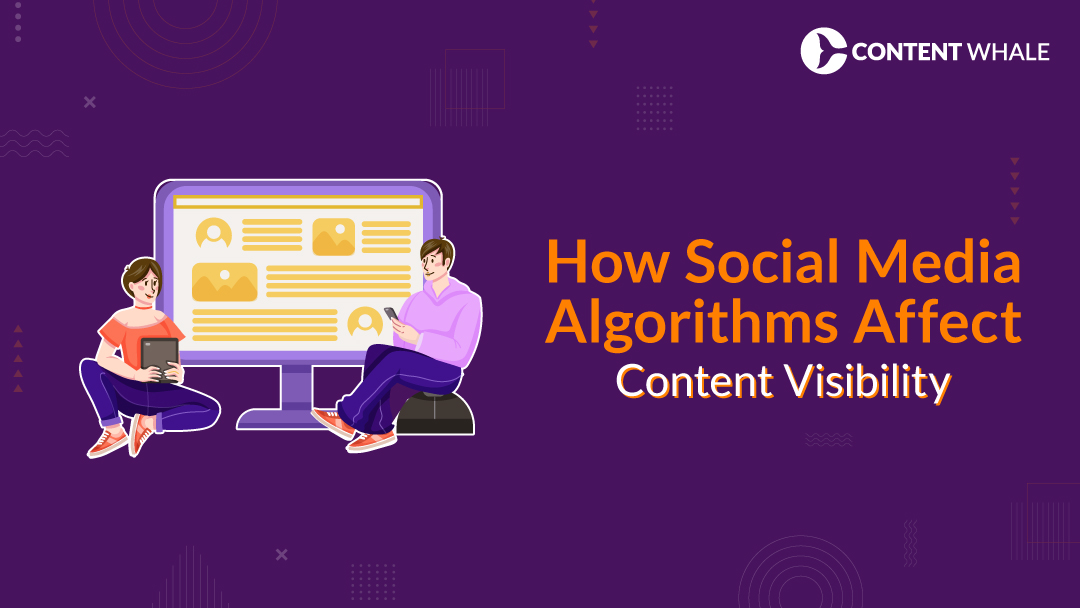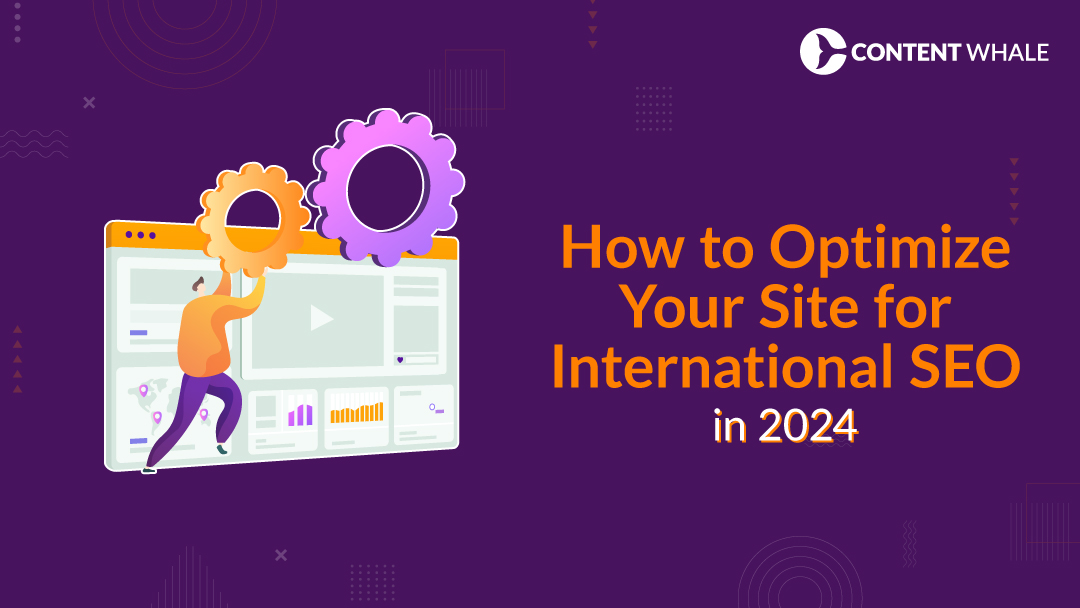Understanding how social media algorithms shape content visibility is crucial for effective social media marketing. These algorithms assess user engagement, relevance, and behaviour to determine the content ranking on platforms. Exploring the distinct algorithmic approaches of Facebook, Instagram, Twitter, LinkedIn, and Tiktok reveals how they impact content reach and engagement. By implementing best practices tailored to these algorithms, marketers can significantly enhance content visibility and engage more effectively with their audience across different social media platforms. Adapting to ongoing changes in algorithms ensures sustained success in digital marketing strategies.
Social media algorithms are complex systems that curate and prioritize content on various social media platforms. They are designed to enhance the user experience by showing the most relevant content based on individual preferences and behaviours. Understanding these algorithms is essential for marketers and content creators. They directly impact how widely content is seen and how well it performs in terms of social media engagement.
These algorithms analyze numerous factors, such as engagement metrics, relevance, and user interaction patterns. Knowing how these factors work helps optimize social media marketing efforts. Every social media platform has its own unique algorithm, which is constantly updated to serve its users better. Staying informed about these updates and adjusting content strategies accordingly can significantly boost visibility and engagement.
Understanding the intricacies of these algorithms allows marketers to develop effective digital marketing strategies. This knowledge helps in creating content that aligns with algorithmic preferences, ensuring better reach and higher engagement. As social media continues to evolve, keeping up with these changes is crucial for sustained success in the digital space.
Understanding Social Media Algorithms
1. What Are Social Media Algorithms?
Social media algorithms are sets of rules and calculations that determine what content is shown to users on social media platforms. These algorithms analyze user behaviour to curate personalized feeds, ensuring users see the most relevant and engaging content.
2. Purpose of Social Media Algorithms
The main goal of social media algorithms is to enhance user experience by displaying content that matches user preferences. These algorithms help platforms like Facebook, Instagram, Twitter, LinkedIn, and TikTok maintain user engagement and satisfaction.
3. How Algorithms Curate Content
Algorithms prioritize content based on various factors:
- User Engagement: Likes, comments, and shares indicate content quality and relevance.
- Relevance: Content that matches user interests and trends is prioritized.
- Recency: Newer posts often get higher visibility to keep feeds fresh.
4. Major Social Media Platforms and Their Algorithms
Facebook’s algorithm prioritizes meaningful interactions. Posts from friends and family are prioritized, while low-quality content is downranked.
Instagram uses different algorithms for Feed, Stories, Explore, and Reels. Each section has unique ranking signals based on user activity and engagement.
Twitter emphasizes recency and engagement. It prioritizes fresh and popular tweets and promotes diverse content to avoid echo chambers.
LinkedIn’s algorithm prioritizes professional content, early engagement, and relevance to user connections. High-quality posts are more likely to be seen.
TikTok
TikTok’s algorithm is highly dynamic, focusing on user interaction with content. It promotes engaging posts regardless of the creator’s follower count.
Understanding these algorithms is vital for effective social media marketing. Tailoring content to align with these factors can significantly improve social media engagement and overall success in digital marketing strategies.
Factors Influencing Content Visibility

1. User Engagement Metrics
Social media algorithms heavily rely on user engagement metrics to determine content visibility. Likes, shares, comments, and saves are key indicators of content quality. High engagement signals to algorithms that a post is valuable, increasing its reach on social media platforms.
2. Relevance and Timeliness of Content
Algorithms prioritize relevant and timely content. Posts related to current events or trending topics gain more visibility, ensuring that users see the most up-to-date and interesting content.
3. User Behavior and Interaction Patterns
Social media algorithms analyze user behaviour to predict which posts will engage them. Past interactions, such as likes, shares, and comments, influence what content users see. This personalization enhances user experience and engagement.
4. Content Type and Format
Different types of content perform differently across platforms. Videos often receive higher engagement than text posts or images. For instance, Instagram Reels and TikTok videos are prioritized due to their high engagement rates.
5. Examples of High-Performing Content
Content that sparks conversation, uses trending hashtags, and incorporates visual elements tends to perform well. For example, posts with questions or calls to action often generate more interaction, boosting their visibility through social media algorithms. Here are some proven examples of how social media content can boost engagement and visibility.
Educational Content
Sharing valuable information, tips, and how-to guides helps establish authority and trust. Tutorials or industry insights can position a brand as a knowledgeable resource, driving engagement and loyalty from the audience.
User-Generated Content (UGC)
Featuring content created by your audience, such as testimonials, reviews, or user-submitted photos, fosters community engagement and enhances credibility. Brands like Starbucks frequently use UGC to showcase real customer experiences, making their content more relatable and authentic.
Behind-the-Scenes Sneak Peeks
Providing a glimpse into your brand’s operations or events humanizes the brand and builds a stronger connection with the audience. This transparency can significantly improve customer relationships and trust.
These examples demonstrate how varied content strategies can effectively boost social media engagement and align with social media algorithms to maximize reach and impact on various social media platforms. Adopting these approaches can enhance your social media marketing efforts and support your overall digital marketing strategies.
Understanding these factors is essential for effective social media marketing. By tailoring content to align with these metrics, marketers can enhance social media engagement and develop successful digital marketing strategies.
Strategies to Improve Content Reach and Engagement

1. Create Engaging and Shareable Content
To leverage social media algorithms, focus on creating content that encourages interaction. Posts that ask questions, include polls, or prompt comments often perform better. Engaging content boosts social media engagement and visibility.
2. Utilize Hashtags and Keywords Effectively
Using relevant hashtags and keywords increases content discoverability. Trending hashtags can enhance reach on platforms like Instagram and Twitter. Keywords also play a significant role in optimizing content for social media marketing.
3. Encourage User Interaction
Prompting users to like, share, and comment on posts can significantly impact engagement. Interactive content, such as contests and giveaways, can encourage more user participation. High engagement levels signal to algorithms that the content is valuable.
4. Maintain Consistency in Posting
Consistency is key in social media marketing. Regular posting keeps your audience engaged and signals activity to algorithms. Using scheduling tools can help maintain a consistent posting schedule, improving overall visibility.
5. Leverage Influencer Collaborations
Collaborating with influencers can expand your reach. Influencers have dedicated followings, and their endorsement can introduce your content to a wider audience. This strategy can enhance both engagement and visibility on various social media platforms.
Implementing these strategies effectively can optimize content performance across different social media platforms. Understanding how social media algorithms prioritize content helps in developing successful digital marketing strategies and improving overall social media engagement.
How Algorithm Changes Affect Content Visibility

1. Recent Algorithm Changes on Major Platforms
Social media algorithms are constantly evolving to enhance user experience. Facebook has shifted towards promoting meaningful interactions by prioritizing posts from friends and family and penalizing clickbait and low-quality content. Instagram has updated its algorithms for Feed, Stories, Explore, and Reels to improve content personalization based on user engagement. Twitter emphasizes recency and diverse content to maintain a fresh and engaging feed.
2. Impact on Content Reach and Engagement
Algorithm updates can significantly impact content reach and social media engagement. For example, Facebook’s focus on interactions reduced the reach of posts that don’t generate meaningful engagement. Instagram’s changes to its Explore and Reels sections aim to highlight content that users find interesting, affecting how often posts are seen. These updates mean that content strategies must adapt to maintain visibility.
3. Case Studies of Brands Affected by Algorithm Updates
Brands have experienced varied effects from these changes. For instance, some saw a drop in organic reach due to Facebook’s new emphasis on engagement, while others adapted by creating more interactive content. A brand that successfully navigated Instagram’s updates improved its visibility by focusing on Reels and Stories, which are prioritized by the algorithm.
4. Strategies to Adapt to Algorithm Changes
Staying informed about algorithm updates is vital for effective social media marketing. Regularly reviewing platform guidelines and analytics can help identify shifts in content performance. Adapting content strategies to align with current algorithm priorities, such as increasing engagement and using trending formats, can improve reach and engagement on various social media platforms.
Understanding these changes and adapting accordingly ensures that digital marketing strategies remain effective, maintaining high levels of social media engagement and content visibility.
Best Practices for Optimizing Content for Algorithms

1. Conduct Regular Content Audits
Regular content audits are essential for aligning with social media algorithms. Review your content’s performance to identify what works best. Analyze metrics like engagement, reach, and conversion rates to refine your social media marketing strategies.
2. Stay Updated with Platform Guidelines
Each social media platform frequently updates its guidelines and best practices. Keeping up-to-date with these changes ensures your content remains relevant. Platforms like Facebook and Instagram provide insights into how their algorithms work, helping you adjust your approach effectively.
3. Use Analytics Tools
Leverage analytics tools to track engagement and reach. Tools like Facebook Insights, Instagram Analytics, and Twitter Analytics offer valuable data on content performance. These insights help in making informed decisions to optimize digital marketing strategies.
4. Adapt Content Strategy Based on Data Insights
Use the data from analytics tools to adjust your content strategy. Focus on creating content that resonates with your audience. This could mean experimenting with different formats, posting times, or topics to see what generates the most social media engagement.
5. Encourage Authentic and Meaningful Interactions
Social media algorithms highly value authentic interactions. Encourage meaningful conversations and engagement on your posts. Respond to comments, ask questions, and create content that sparks dialogue. This approach helps build a loyal audience and improve content visibility.
By following these best practices, you can effectively optimize your content for various social media platforms. Understanding and leveraging social media algorithms ensures better engagement and success in social media marketing.
Case Study: How We Optimized Our Social Media Strategy

1. Initial Challenges with Content Visibility
Our initial challenge was low content visibility despite regular posting. Engagement metrics were below expectations, and our reach was limited. Understanding social media algorithms were critical to improving our social media marketing efforts.
2. Specific Strategies Implemented
To address these issues, we implemented several strategies:
- Content Audits: We conducted regular audits to identify high-performing content.
- Trending Hashtags: We used relevant and trending hashtags to increase discoverability.
- User Interaction: We encouraged comments and shares to boost social media engagement.
3. Examples of Successful Posts and Campaigns
One successful campaign involved user-generated content. We asked followers to share their stories using a branded hashtag. This increased engagement and expanded our reach. Another effective strategy was collaborating with influencers, which introduced our content to new audiences and improved engagement metrics.
4. Results and Improvements Observed
After implementing these strategies, we observed significant improvements. Engagement rates increased, and our posts reached a broader audience. Specific posts saw a 30% increase in likes and shares, and overall visibility improved by 25%. These changes demonstrated the effectiveness of our revised digital marketing strategies.
5. Lessons Learned and Tips for Other Businesses
From this experience, we learned several key lessons:
- Adapt to Algorithm Changes: Staying updated with changes in social media algorithms is crucial.
- Focus on Engagement: Prioritizing authentic interactions boosts visibility.
- Regular Audits: Continually review and adjust strategies based on performance data.
By following these practices, businesses can enhance their presence on social media platforms. Understanding and leveraging social media algorithms effectively can lead to improved social media marketing outcomes and greater social media engagement.
Conclusion

Understanding social media algorithms is essential for effective social media marketing. These algorithms determine how content is prioritized and displayed on various social media platforms. By staying informed about algorithm changes, marketers can adjust their strategies to enhance social media engagement and reach.
Adapting to continuous updates in social media algorithms ensures that content remains relevant and visible. Regular audits, engaging content, and consistent posting are crucial for maintaining a strong presence. Leveraging insights from analytics tools helps refine digital marketing strategies, aligning them with current algorithmic preferences.
The dynamic nature of social media platforms requires marketers to be flexible and proactive. Keeping up with trends and algorithm updates is key to sustaining engagement and visibility. Ultimately, a thorough understanding of these algorithms leads to more effective social media marketing and higher engagement rates.
If you are looking for best copywriting services in the US, then Content Whale is the prominent figure which caters to content and copy writing services in the US.
FAQs
How do social media algorithms affect content visibility?
Social media algorithms use engagement, relevance, and user behaviour to determine which posts appear in users’ feeds. High engagement signals that content is valuable, increasing its visibility.
What factors influence the ranking of content on social media platforms?
Factors include user engagement metrics (likes, shares, comments), relevance to current trends, recency, content type (video, image, text), and user interaction history. These elements help platforms decide what content is most likely to interest users.
How can I improve the reach of my content on social media?
Enhance content reach by creating engaging posts, using relevant hashtags and keywords, encouraging user interaction, posting consistently, and collaborating with influencers. These strategies boost visibility and engagement.
What are some recent changes in social media algorithms?
Recent changes include Facebook prioritizing posts that spark meaningful interactions, Instagram updating its Reels and Explore algorithms to personalize content better, and Twitter emphasizing recent and diverse content to keep feeds fresh.
How can I optimize my content strategy for better algorithm performance?
Optimize your content strategy by conducting regular content audits, staying updated with platform guidelines, using analytics tools to track performance, adapting your strategy based on data insights, and encouraging authentic and meaningful interactions.
Following these practices ensures that your content aligns with the priorities of various social media algorithms, enhancing your social media marketing efforts and boosting social media engagement.





